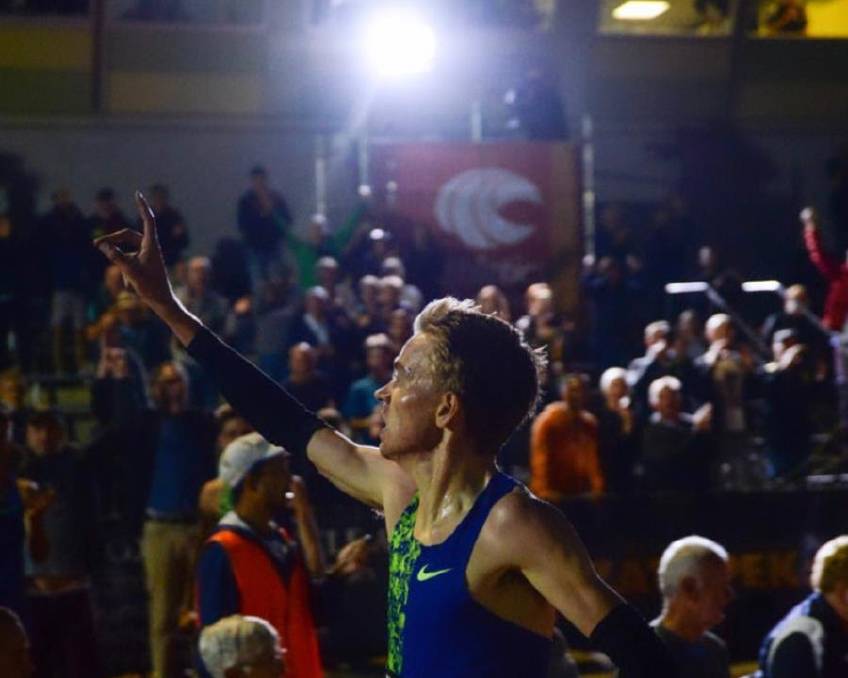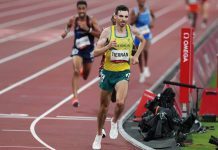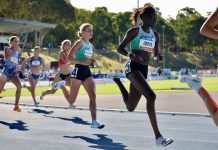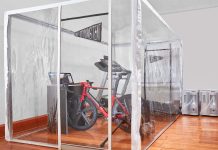By Mitchel Brown
In the hours before Stewart McSweyn raced his way into the record books on Saturday night (a performance that will henceforth be referred to as that run), Hagenauer Reserve was already putting forward a strong case to become a more permanent home for the
Zatopek:10.
Resurfacing works at the event’s “traditional” base of Lakeside Stadium (read: since 2011) meant a forced relocation, and, as something of a spiritual home for Victorian middle- distance running, the historic venue in suburban Box Hill seemed a fitting choice as a
temporary replacement.
But as the evening unfolded, the feeling seemed to grow stronger and stronger that – much like Marnus Labuschagne during the recent Ashes series – the super sub brought in to address a short-term problem could well prove to be a winning long-term solution. Thanks to the track’s quaint, intimate setting, complete with a grassy back-straight bank perfect for unfurling a picnic blanket, there was an atmosphere to the occasion that the comparatively cavernous Lakeside Stadium could never hope to replicate with the typically modest Zatopek crowd (perhaps all an event that revolves around two 10,000m races can realistically hope for in an age of dwindling attention spans and the Big Bashification of everything).
View this post on Instagram
A few of my drone pics from last night’s #zatopek10, women’s and men’s 10,000m races #djispark
What’s more, relieved of the financial burden of extortionate Port Phillip Council parking fees and $25 tickets, patrons were only too eager to spend up at the canteen and bar, indulging in such classic volunteer barbecue fare as the burger with the lot – washed down with an icy cold and reasonably priced beer, of course – and providing a valuable contribution to the coffers of the “Big White Horse” in the process.
Then, with that run, McSweyn showed just how perfect a fit for each other the Zatopek and the Box Hill track really are, emphatically and very publicly reinforcing a point already well known in the Victorian running community: if you want to run fast, there are few better spots than that beautifully sheltered Barwon Street block.
Of course, on current form, McSweyn looks capable of running fast in a pair of concrete shoes – so too second-placed Patrick Tiernan, who provided the new Aussie 10,000m record holder with the ride of a lifetime in metronomically leading him around at 66-second lap pace for roughly 9590 metres.
It would also be remiss not to acknowledge that the near-perfect trackside conditions on Saturday would only have been marginally better than almost any other part of metropolitan Melbourne, which served up a dream night for racing.
 Still, the combination of said reputation and first-up delivery of an Australian record on home soil courtesy of that run – almost unthinkable in this day and age – makes a compelling case for Box Hill as the venue of choice going forward, especially when Lakeside’s contrasting status is factored in.
Still, the combination of said reputation and first-up delivery of an Australian record on home soil courtesy of that run – almost unthinkable in this day and age – makes a compelling case for Box Hill as the venue of choice going forward, especially when Lakeside’s contrasting status is factored in.
Just as Box Hill benefited from pristine city-wide weather on Saturday, recent editions of the Zatopek at Lakeside have suffered at the hands of wild and woolly conditions that would have proved inescapable at virtually any Melbourne venue.
Yet there can be little doubt the popular view of Victoria’s premier athletics venue is that it suffers from excess exposure to the elements.
Despite being hemmed in by two prominent grandstands and the historic Victorian of Institute of Sport building, Lakeside Stadium’s positioning on the wide open expanses of Albert Park leaves it particularly vulnerable to the prevalent southerly winds that roll in from nearby Port Phillip Bay.
Indeed, of the athletics community’s grievances with the venue – some real, some imagined and perhaps a product of lingering resentment at the demise of the beloved Olympic Park – a lack of wind protection may well be the most pressing, not least of all for competitors in an event like the Zatopek; after all, 25 laps’ worth of wind is a lot of wind.
That said, Box Hill is not without its own shortcomings. The tradeoff of quaint suburban charm is typically a lack of facilities, and Hagenauer Reserve does come up short in a number of key areas.
There is no electronic scoreboard; portable lighting is required to supplement the track’s insufficient floodlights; and, while the grassy back-straight bank may be an attractive option for many, those requiring a seat are forced to fight it out for a spot on the handful of benches in the “grandstand” near the finish line.
That same grandstand is also the venue’s only undercover area, and however well the track’s natural surroundings keep it sheltered from the wind, they do little to keep spectators dry if the heavens open.
Ultimately, though, decisions like these are a matter of balancing the interests of athletes with those of spectators, and those interests are perhaps best balanced at the point where they intersect: big performances, which athletes want to produce and spectators want to witness.
 The sample size is small so far – at least where the Zatopek is concerned – but having already served up that run, Hagenauer Reserve has shown itself to be well and truly capable of delivering on that front while still being able to accommodate the sort of niche crowd the event draws.
The sample size is small so far – at least where the Zatopek is concerned – but having already served up that run, Hagenauer Reserve has shown itself to be well and truly capable of delivering on that front while still being able to accommodate the sort of niche crowd the event draws.
With that in mind, here’s hoping the powerbrokers at Box Hill Athletic Club are already preparing their pitch to be given the opportunity to build on their venue’s credentials at next year’s meet.




























Great article and fully agree. The benefits of Box Hill is that, first and foremost, it is a fast track. And when time is everything for gaining international representation, athletes will vote (literally) with their feet – they want to run at fast tracks. A quick review of Australian track records shows that almost everyone was achieved overseas – except now for Box Hill, a huge outlier. Box Hill seems to be naturally protected.
Secondly, since we started the Whitehorse Twilight and Box Hill Classic a few years ago, a constant feedback has been the intimacy of the track. People are close. Gen Gregson during her interview after winning the Women’s 10,000m thanked the crowd and said she could hear every word of support as she ran. Albert Park can feel quite empty with the same amount of people. My observation (from the bar) was that Zatopek at Box Hill appealed to the running ‘tribe’ – all the athletes and coaches were in close watching some great races. To me this is how you grow the sport.
The bar and BBQ went off the dial on Saturday – on two occasions we had send out to replenish the bar. This is the fourth time we have run the bar at Box Hill, and as people become aware that you can have a cold beer or glass of wine (even at G&T) while watching athletics, it has grown and grown. Free entry, you also cannot beat.
Importantly, long-term, by hosting the Zatopek, we have been able to promote the need for the local council to invest in lighting and improved terracing – this is a longer project but the support of the athletics community in promoting the need for great suburban tracks will be critical.
As yes, we sent a note on Sunday morning to both the CEO of Athletics Australia (Darren Gocher), and the CEO Athletics Victoria (Glenn Turnor) thanking them for the opportunity to host, and saying we are keen to host again next year – but promise no Carlton Dry this time (sorry Flip from CUB).
Jeremy Griffith
Box Hill Athletic Club